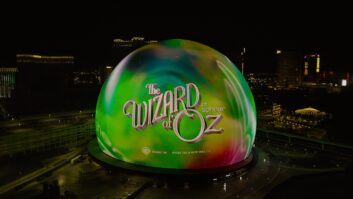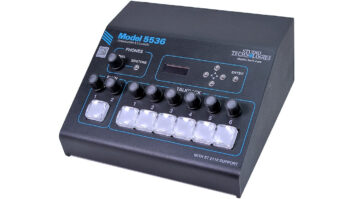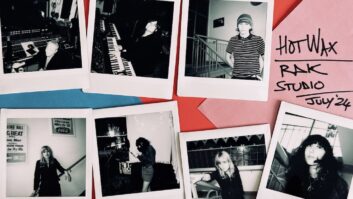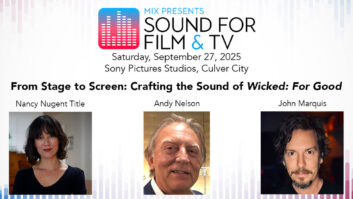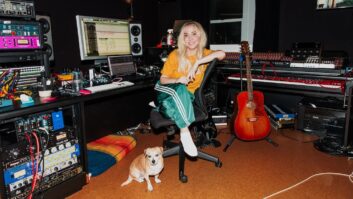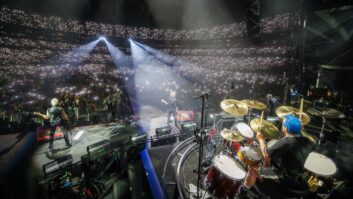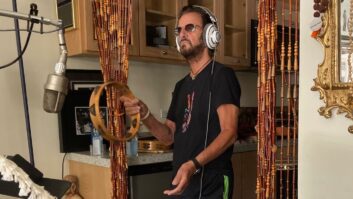Rich Tozzoli Recently I’ve been working on a recording project that was just so refreshing, I wanted to write about it. Sometimes, especially after being in this crazy biz for a while, each of us can get stale. Sometimes we forget that music is supposed to be creative, inspiring and fun, and that recording projects can often push us into uncomfortable places where we hopefully come out better off than we were going in. And when the mutual parties involved trust each other enough, the technology involved often disappears, allowing the focus to be solely on making great music.

The project I’m referring to is the Trio Of Oz featuring Omar Hakim (Sting, Weather Report, Daft Punk), Rachel Z (Peter Gabriel, Wayne Shorter, Stanley Clarke) and newcomer to their project, bassist Jonathan Toscano, who studied with jazz great Ron Carter. Recorded at Omar and Rachel’s comfortable, well-equipped home studio, it includes both original tracks and several unusual cover tunes. It came about naturally—after enough rehearsals, they thought it was time to get some tracks laid down, which is one of the many benefits of having one’s own recording setup.
Omar knows his way around the studio as well as anyone and has a 24-fader Digidesign D-Command ES console with 32 channels of Pro Tools HDX in a separate control room. His outboard rack offers a nice variety of old and new, with preamps from Focusrite, API, ADL/PreSonus, Digidesign, Mindprint, Amek/Neve, Trident and Audient. In the box, he’s running Pro Tools 11 with a variety of plugins from Waves, Sonnox, McDSP and SoundToys. But his latest addition to the control room—ATC SCM50ASL Pro studio monitors—are making tracking and mixing a dream for me. When he first played them for me, I just sat there with my hands up and said, “I want these!” But more on that later.
The live room is a busy place. Omar’s drums are set in the back against the rear wall. The kit is well-outfitted with beyerdynamic mics: TG D70d on kick, TG d57c and TG 58c over five toms, M 201 TG on primary snare top, mC 950 on hi-hat, and TG 50d on snare bottom and secondary snare top. A pair of Milab VM-44 condensers act as overheads. There’s a Neumann TLM-103 on center overhead and one several feet back in the room.
Rachel Z’s setup is facing Omar’s on the opposite side of the room: keyboard central, as I call it, with a Roland V-Piano, Roland A-800 Pro Controller and a Kurzweil PC3K7. She has two separate laptops—one running Ableton Live and the other with software such as Spectrasonics Omnisphere and Synthogy’s Ivory. There’s also a custom Purple Sparkle Moog Voyager synth with stereo outputs. All the keyboard outputs are independently fed into a PreSonus 16.0.2 StudioLive mixer and an eight-channel Behringer Ultra Pro DI, routed to various preamps for Pro Tools connectivity. We also took the MIDI Out from the Roland V-Piano so that the notes were tracked, allowing for further editing and overdubs.
Jon ran his electric 5-string bass into a Behringer BD121 V-Tone Bass Driver DI into the Focusrite ISA preamp. The acoustic bass would be tracked at a time later.
Omar Hakim and Rachel Z’s gear-packed, home-based recording studio. Headphone feeds, which we all know are critically important when recording live, were derived using the Behringer Powerplay 16 personal headphone mixing system. Pro Tools outputs fed the Behringer and then Audio-Technica and Sony headphones. In the headphones, I also set up a few Sonnox reverbs for snare and piano and also McDSP’s Revolver for a variety of convolution sounds on drums.

The first day’s setup involved not only wiring all the mics into their respective preamps, but also doing some trial and error mic tests. To be good at one’s craft, always be open to new sounds and willing to try new things. We took the time to put up a variety of different mics on the toms, overheads and kick, and came away mutually agreeing the Sennheisers had the best overall sound—for all drums. All mics would be recorded clean, but the two Neumanns used on overhead center and room would be processed on a per track basis with 1176 compression and Sonnox EQ.
That brings me to the speakers. Omar had been turned on to ATCs when over in London playing with Kate Bush last year. Before I knew it, a pair of SCM50 monitors were in the control room. They make tracking and mixing a pleasure; they are open, true and easy on the ears. We used them like a production tool, making critical decisions on drum tuning, the use of different snares, reverbs and keyboard sounds by tracking test runs.
“The idea for the sessions was to first rehearse the trio to work out basic arrangement concepts and get comfortable with the new tunes,” noted Hakim. “Production-wise, I like to do multiple takes of songs just to see how the improvisational aspect of what we do will evolve over several days of recording. The plan for Oz this time is to do our best to blend the ‘jazz language’ with contemporary grooves and sounds.”
I mentioned above that the sessions were refreshing, and they truly were. Way too often, sessions can be long, arduous and grinding; truthfully, that is why I choose to largely compose TV music instead of recording artists these days. But these sessions have been different: fun, fluid and open. The music, which they worked out as the tracking progressed, was top notch (that always helps). There was a comfortable give-and-take between the band and me. I could openly suggest ideas to them (though they didn’t need many). I could push them to do more takes even when they thought they had it and not feel uncomfortable. Sometimes it’s just good to have a fresh ear hear things.
Another great benefit of studio collaboration is being around likeminded souls. Many of us work alone far too often these days. One day, Omar and Rachel had keyboard great Bruce MacPherson come in and work with Rachel on modern and vintage analog synth sounds. That’s what the studio is for—to create, collaborate and learn.
Rich Tozzoli is a producer, mixer, engineer and musician/composer for programming such as A&E’s Duck Dynasty, History Channel’s Pawn Stars, Harpo Studios’ 21-Day Meditation Challenge and more.
